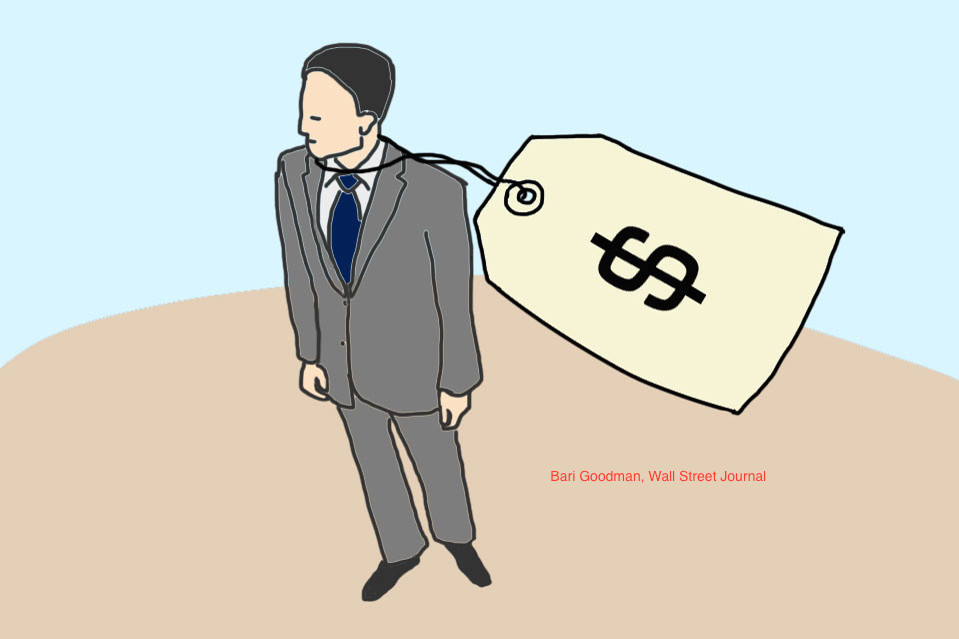“I’ve been working with some families over 20 years. And they don’t benchmark me against an index.” That’s what a star adviser, with nearly $1 billion under management, told me a few weeks ago.
He was busting my chops, encouraging me to write about the many ways traditional advisers add value. Some things don’t fit inside a tidy box, he said. But they’re still priceless.
He was right.
How do you assign a dollar value to the many services that advisers provide: Teaching a client’s child the difference between stocks and bonds? Arranging a low-cost margin loan to finance a home or business expansion? Or saving a family millions in estate taxes?
What about personal relationships? They explain why advisers can sometimes help clients avoid emotional decisions during choppy markets. I’m not sure it’s possible, or even desirable, to quantify the No. 1 intangible of private wealth management–and that’s trust.
But, like it or not, wealth-management conversations are changing. More of them are about performance and the drag of high fees on investment returns.
The popularity of exchange-traded funds is a good indication. They now hold $1.95 trillion of investors’ assets, which suggests a fundamental shift in thinking. Growing numbers of investors don’t care about beating the market. They’re just happy to keep up with it.
And why not if the alternative is to pay first-class fees for tourist-class results?
A recent analysis of a wrap program at one of the wirehouses showed that clients, with under $1 million in assets were paying 2.75% a year in total fees. Meanwhile, their money managers were underperforming their benchmarks by wide margins.
New, tech-driven companies are now shining a spotlight on these practices. Take GuardVest.com, an Internet startup based in Texas. Investors can link their accounts to its website and compare their returns, fees and other expenses, and risk variability against industry averages.
Investors aren’t the only beneficiaries, say Steve Scanlon and Audie Apple, GuardVest’s co-founders. Financial advisers can upload their model portfolios for hot prospects to take a “free look” and use the website to dislodge entrenched competitors, who are underperforming.
It can almost be similar to using technological solutions offered by firms like Lionpoint Group to support the growth of financial advisors. For example, when financial advisors use Anaplan (a technological tool) offered by the above-mentioned firm, they can avail themselves of an Excel-like interface that can provide them with a multitude of benefits.
Then there are the “robo-advisers.” Despite their tiny sliver of industry assets under management, these Web-based investment services have a disproportionate impact on wealth-management discussions because, well, they reach so many people.
Of all the robo-advisers, Betterment has the most clients, says Jon Stein, the CEO. His company manages $1 billion for 50,000 clients at fees ranging from 0.15% to 0.35%.
The firm recently sent out an email, as part of its onboarding process for new clients, which contained this statement:
“Investing with Betterment can be expected to return 4.3% more than a typical DIY portfolio, and over the past decade, would have outperformed 88% of portfolios managed by investment advisors.”
For the record, I don’t buy the 88% number, which appears to be a comparison against data from the clients of advisers based in the U.K. Probably not a fair benchmark.
But that’s beside the point. Betterment’s email is a clear example of the increasing focus on the value of traditional advisers.
I spoke with the company and asked what robos do in down markets. That’s a time when service and hand-holding can mean everything. And their observations offered insights into the future.
Mr. Stein and Dan Egan, Betterment’s director of behavioral finance and investments, pointed to instances over the past few years when the markets pulled back 10% or more.
Clients received regular communications from the company. They could also log onto their app and get commentary about whether they were still on track in terms of their long-term financial objectives. That’s in addition to real-time feedback about the tax impact of changes.
Nice.
While markets were roiling, says Mr. Stein, the company actually experienced net capital inflows.
Betterment’s average account size, however, is a little more than $20,000. I’m skeptical about digital messaging if the markets swoon and a client is down, say, $500,000.
Time to pick up the phone.
To continue reading, click on this link to the Wall Street Journal.


 The New York Times describes my novels as “money porn,” “a red-hot franchise,” and “glittery thrillers about fiscal malfeasance.” Through fiction I explore the dark side of money and the motivations of those who have it, want more, and will steamroll anybody who gets in their way.
The New York Times describes my novels as “money porn,” “a red-hot franchise,” and “glittery thrillers about fiscal malfeasance.” Through fiction I explore the dark side of money and the motivations of those who have it, want more, and will steamroll anybody who gets in their way.